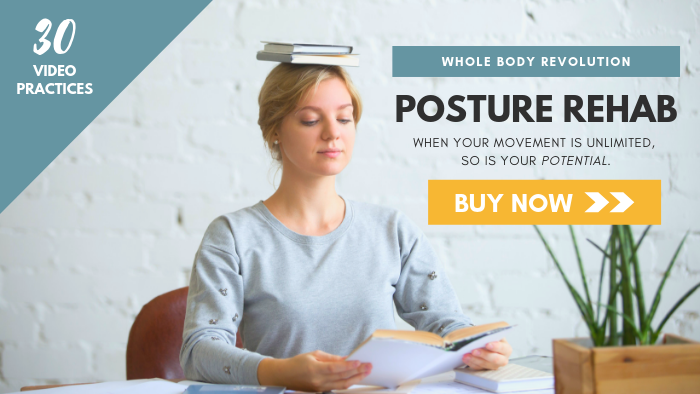Here’s a question: do you have a morning stretching routine?
If you wake up stiff and achy, it’s natural to want to stretch first thing to get your body moving comfortably again.
Of course, maybe you don’t stretch first thing when you get up, but you know you should. Or that you should be stretching more in general.
Well, I’m about to create quite a kerfuffle here by telling you something you might not want to hear…
Your morning stretching routine is a complete waste of time.
Whaaaa?
That’s right. I’m sorry if that sets your feathers all a’fluff, but it’s the straight up truth.
And here’s why:
When you do your morning stretching routine, how long is it? Five minutes while the coffee brews? Maybe ten?
Or maybe you’re a super achiever who hits up an hour-long yoga class to get rid of your morning stiffness.
Here’s the thing…
Those five, ten or even sixty minutes of stretching mean absolutely nothing if you just forget about your body for the rest of the day.
If you stretch your chest for a few minutes in the morning but then hunch over your laptop for eight to ten hours of eye-straining spreadsheet creation, you’ve not only negated the stretches — you also strengthened your already-tight chest muscles.
Or maybe you suffer from neck pain, so you stretch it when you wake up only to walk through life with your eyes on your toes causing a fatty neck hump to form in your upper back.
Tight hips? Stretch them all you want, but if you’re using your quads to motor you around, you’re not going to notice much benefit.
Here’s what you’re not learning from doctors, physical therapists and that massage guy who digs his thumbs into the egg-sized knots in your shoulders:
The way you move every day shapes your body.
How you sit in front of a computer…
How you pick up your toddler…
How you carry your groceries…
How you walk…
The fact is…
We all develop movement habits over the course of our lives. But do you remember how you learned them?
No one told you: contract right quad thirty percent, engage left toes, balance with your glutes…
You just…did it.
And now you move the way you move. Walking is just walking, sitting is just sitting.
But the way you walk, sit, and do all the other things you love to do in life actually shapes your body.
So, I would argue that how you’re doing the things you’re doing for twenty three hours and fifty minutes is far more important than what you’re doing during the ten minutes that you’re stretching.
For the record, I’m not saying don’t stretch.
I’m saying that to fix your posture and move more comfortably so that you can do the things you love without pain or restriction for as long as you’re alive…
You gotta change how you’re moving throughout your day.
Which means reprogramming your neural patterns. Because it’s your nervous system that tells your body how to move.
We learn these movement habits in various ways — some we mimic from our parents or caregivers, others are cultural (such as: men don’t wiggle their hips when they walk), still others reflect physical injuries or emotional traumas we’ve incurred on the road of life.
Basically, your movement is the sum total of your lived experience.
And if you’ve got aches and pains, the habits you’ve adopted might be a little less than optimal.
But you’re in luck…
Changing movement habits is what I do.
It’s what I’ve done for fifteen years, in fact.
Many of my clients were told that feeling stiff and achy is “just a part of getting older” or “normal for the kind of activities you do.”
I’ve consolidated my experience helping these people to stand taller and move better into a digital video course that will teach you how to heal your body and feel more agile despite old injuries — even if you’d tried yoga, Pilates or deep tissue massage without getting lasting results in the past.
The Bottom Line on Your Morning Stretching Routine
Again, I’m not saying you have to ditch your morning stretching routine. And I’m certainly not encouraging you to give up yoga.
But have you ever heard the saying everywhere you go, there you are?
Well, movement is kind of like that. Your body has a unique way of firing muscles, kind of like a movement signature. And you take that signature with you whether you’re cycling, swimming, doing yoga, running or even just sitting on a plane.
The way you move can either be causing friction that results in wear and tear on your muscles and joints, or it can be optimized for efficiency so you move through life with ease and fluidity.
Posture Rehab teaches you how to do the latter.
